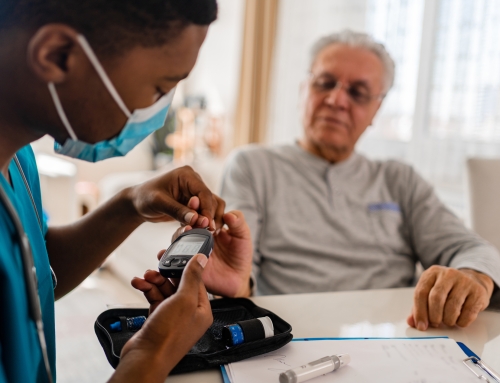By Mark Scirocco, Patient Ambassador
I have been on in-center hemodialysis for three years. It was a rough start, as I went through 11 chest catheters in a little over a year. Two of them just fell out while I was sitting at home; the others got clogged. The last one almost killed me, stopping fluid in my upper body and head. My fistula was barely ready when they took that one out and placed a stent in my chest to allow fluid past my upper body.
Three months after starting my fistula, I needed a fistulogram to open it up. For those of you who have not heard of a fistulogram, it is a common test that looks for issues with the fistula that could be causing problems with dialysis. It is a specific x-ray process that uses dye to look at the fistula’s blood flow to primarily check if it is blocked or if there is any narrowing.
I started having issues with my fistula every four to six months after August 2016. After my fourth fistulogram, I came down with a rash that didn’t feel like a regular rash. It burned and later peeled like a sunburn. I had a change in steroids for my prostate cancer, and I had a bone scan and CT scan at the same time. I could not tell which one caused the problem. Then in January 2018 came the fifth fistulogram, and the rash was much worse. My dermatologist took a couple of samples that came back showing it was a reaction to something that was put in my system. The fistulogram was the only suspect this time. So the questions were: 1) was it the dye, 2) was it latex gloves or 3) was it the “tent”? The “tent” during a fistulogram when the fistula is in the arm, is where aluminum braces are put in place around the upper body and a fabric is stretched across it. The fabric, which covered my face and torso while my fistula arm was extended out, caused itching where it touched the skin, thus adding the tent as a suspect.
My labs had been great for over a year, and my time had been cut 15 minutes per session until my time had been reduced from five hours to four and a quarter hours. The day before the last 15 mins were cut, I got a call from the hospital to confirm an appointment for a fistulogram. I was not happy to hear this and complained to the center that I got a horrible rash from something during the procedure. They said my dialysis machine reported, “ineffective access flow testing, unable to run HD at prescribed BFR.” I was told to stop baby aspirin five days prior and to take medications 12 and two hours prior to the fistulogram. I was scared, but I put my trust in the people at my clinic and signed the papers authorizing them to do the procedure. I dialyzed for the next three treatments (when I got 15 minutes cut from my time) with no alarms, beeps or buzzes.
After being prepped for this last fistulogram, when the nurse asked what I was allergic to, I told her I get a horrible rash every time I have this procedure done. As soon as the dye went into my system, I told them I was itching all over my body. I was then given prednisone and Benadryl. In the recovery room, the rash began to appear and started spreading.
Just a few days later, my neck was getting tight, and blisters were forming around my neck and left eye. I already have asthma, so I went to the emergency room (ER) as I feared breathing problems would be accelerated. The ER doctor diagnosed my ailment as Stevens-Johnson syndrome (SJS) and toxic epidermal necrolysis (TEN) by my external symptoms— the rash was burning and hurting rather than itching. Being unfamiliar with SJS/TEN, they sent me by ambulance to another hospital where health care workers were familiar with this rare disorder. During this hospital stay, the staff helped care for my lips, which were swollen and oozing blood, the rash spots, which were peeling like a severe sunburn, and my short stints of chills and difficulty breathing. I was lucky I did not get sepsis while fighting this infection, and I am happy to say I am well on the road to recovery from SJS/TEN.
I also think there were great gaps in communication among those involved in my care—the dialysis clinic, my primary physician and my dermatologist. I needed everyone on my team to understand my condition, know what had happened and to have a plan to prevent future episodes. If they had shared this information, I believe my last bout that was so dangerous could have been prevented.
According to the US National Library of Medicine, “Stevens- Johnson syndrome/toxic epidermal necrolysis (SJS/TEN) is a severe skin reaction most often triggered by particular medications. Although Stevens-Johnson syndrome and toxic epidermal necrolysis were once thought to be separate conditions, they are now considered part of a continuum. Stevens-Johnson syndrome represents the less severe end of the disease spectrum, and toxic epidermal necrolysis represents the more severe end.” Although the symptoms for SJS/TEN often start with a fever and flu-like symptoms, the painful skin conditions of blistering and peeling start within a few days.
My goal in sharing my story is to help others avoid this experience by learning about SJS/TEN. It is a life-threatening disease and for me, a repeat case of SJS/TEN can be very serious or even fatal. Although it is hard to know about every rare condition out there, the more we can learn from each other, the more we can protect ourselves in the future.




